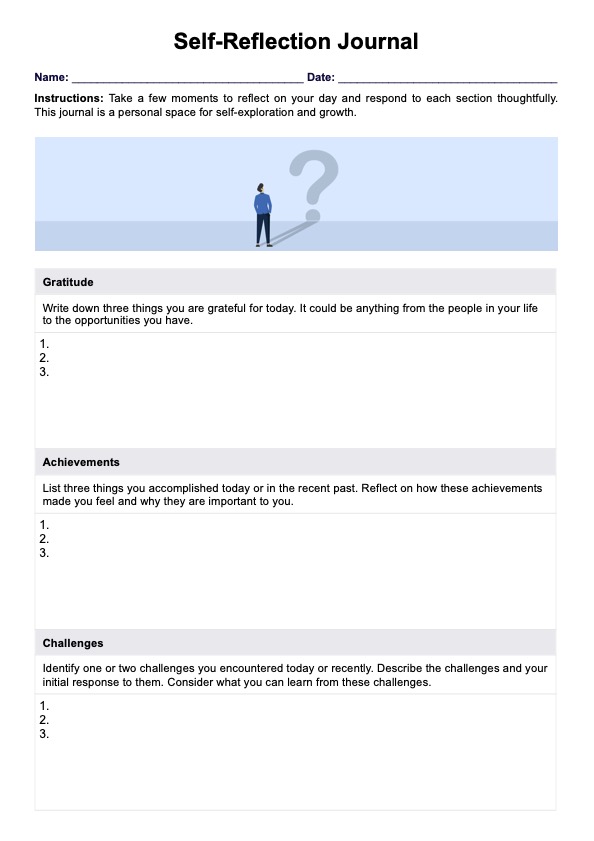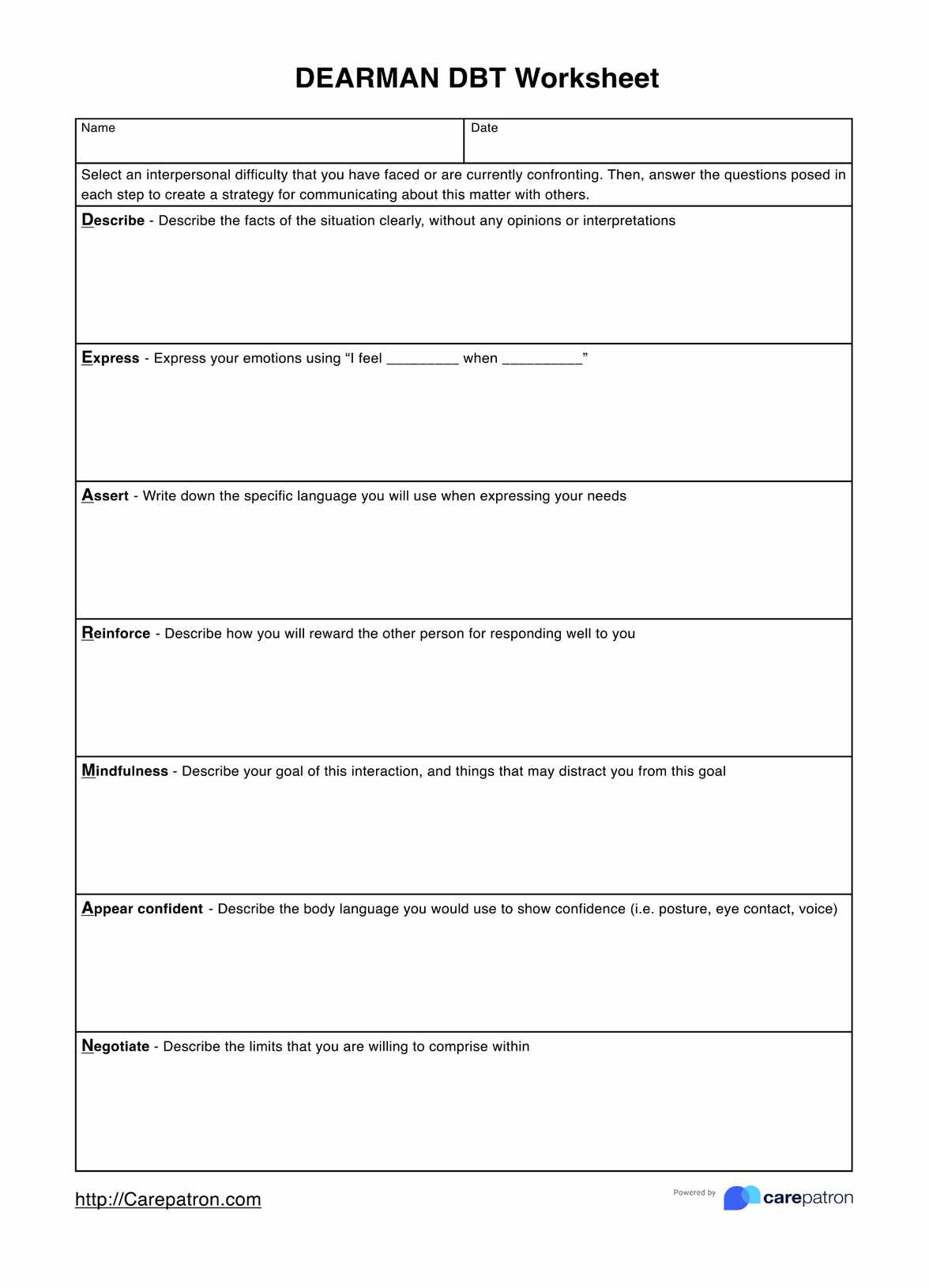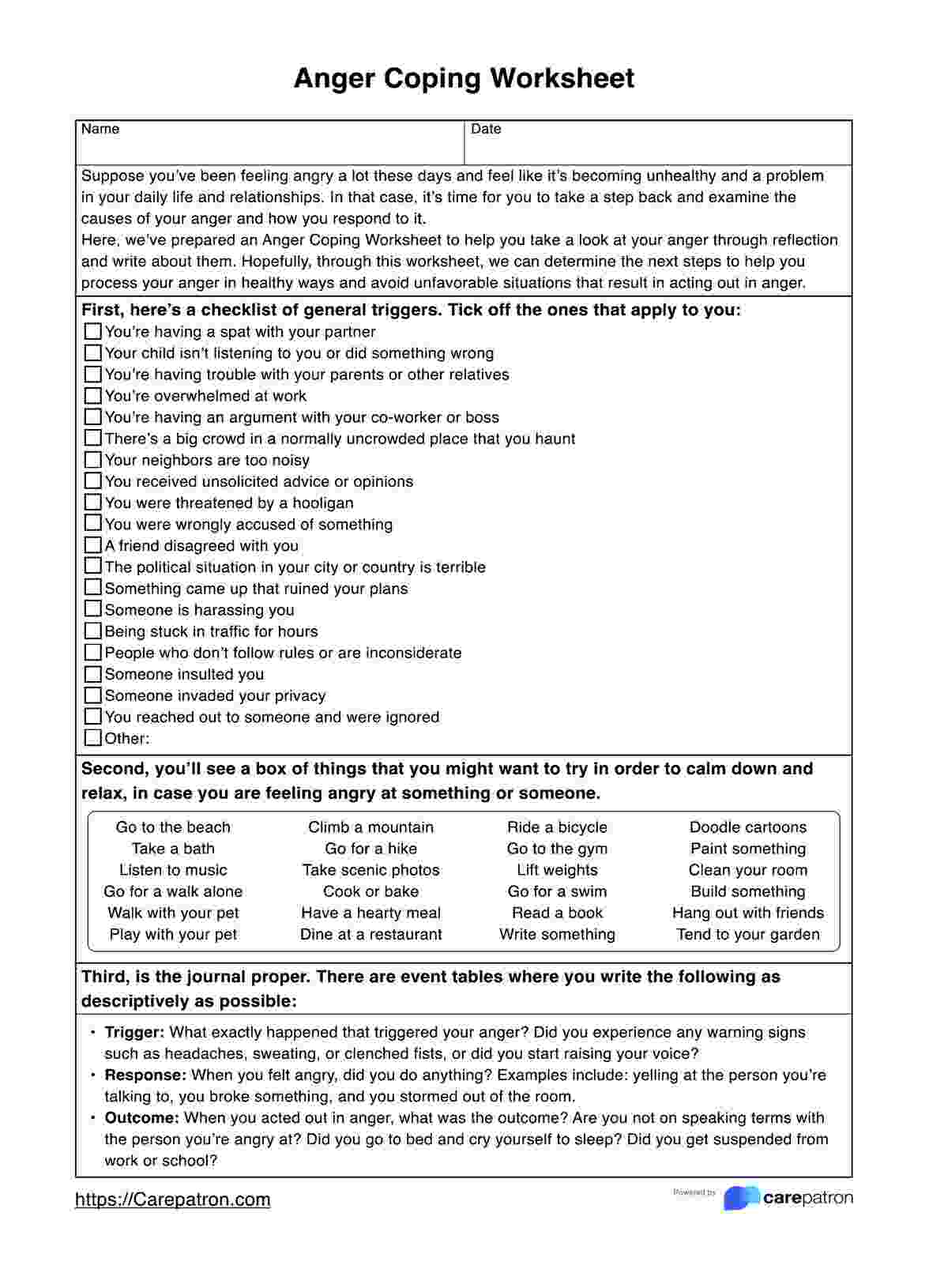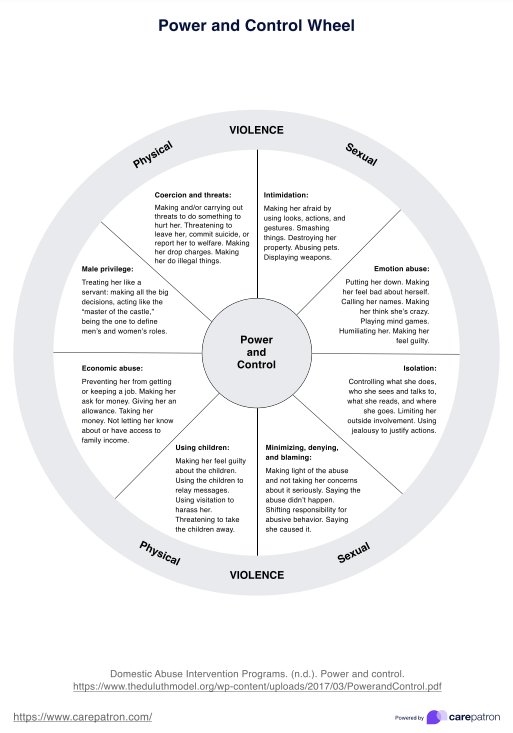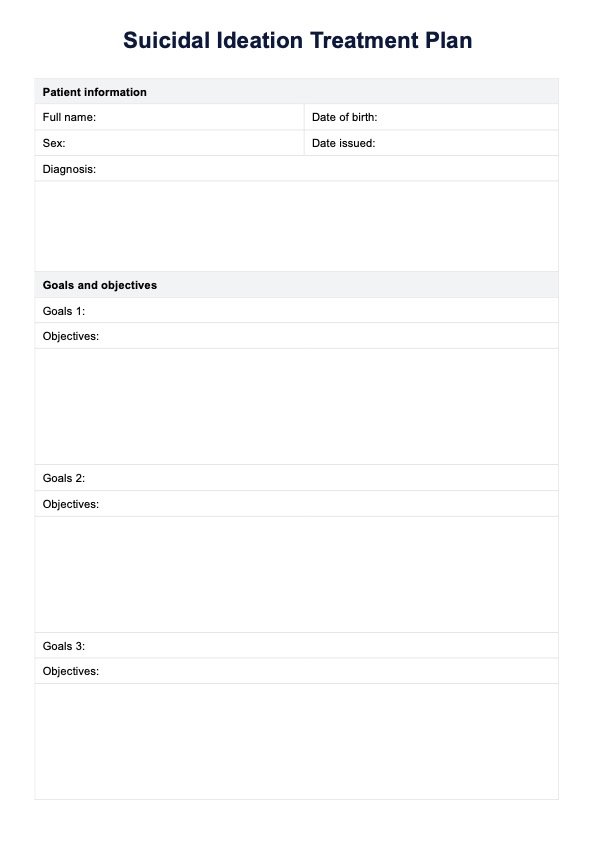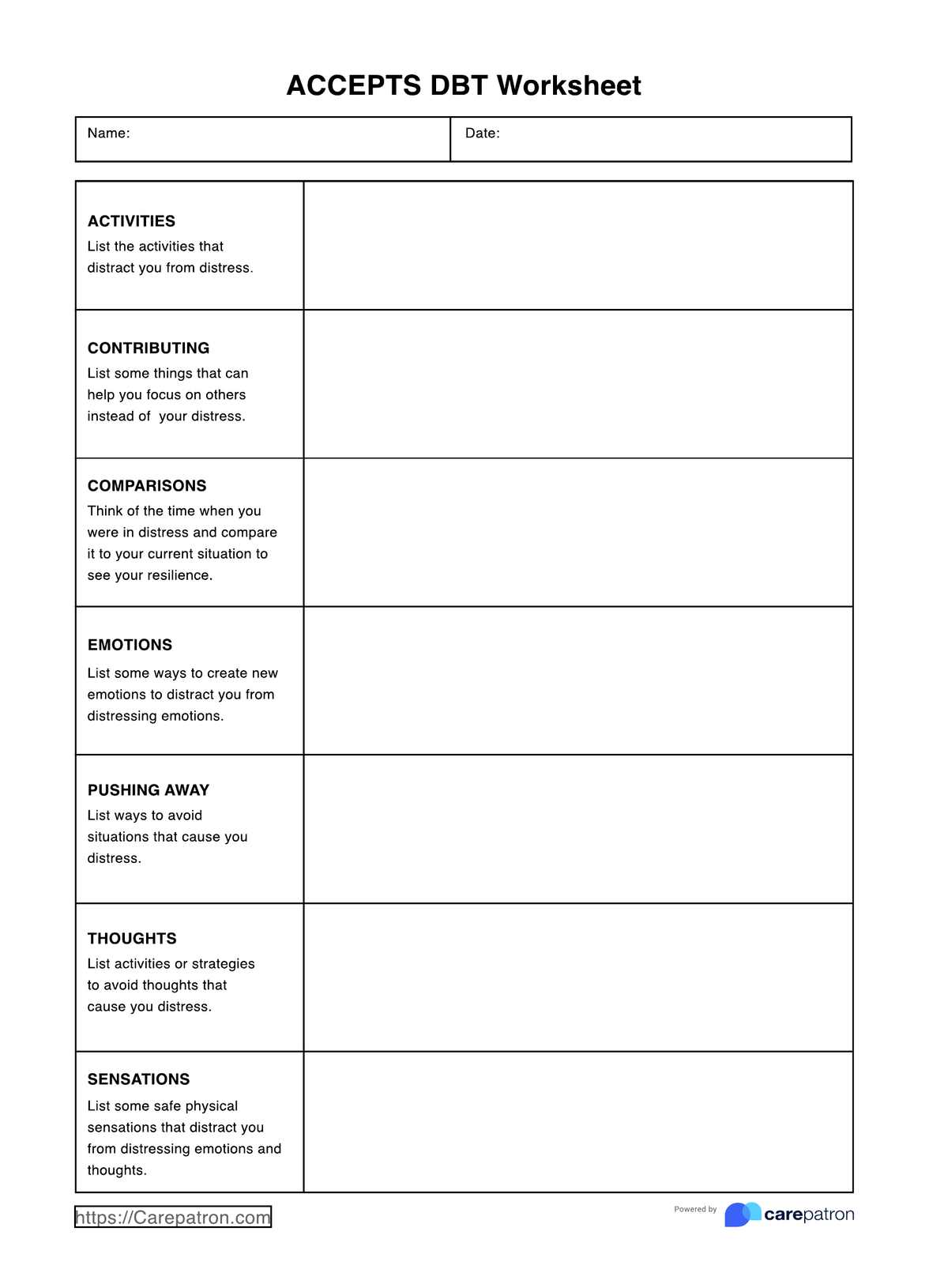Mindfulness Log for Panic Attacks Worksheet
Manage panic attacks with the Mindfulness Log for Panic Attacks Worksheet. Track triggers, apply mindfulness, and reduce distress. Download the PDF.


What are Panic Attacks, and What is Panic Disorder?
Panic attacks are intense episodes of extreme fear and distress that typically come on suddenly and reach their peak within a few minutes. These episodes are characterized by physical and psychological symptoms that can be terrifying for those who experience them.
Common panic attack symptoms include a racing heart, shortness of breath, chest pain, trembling or shaking, sweating, impending doom, dizziness, and detachment from reality. People having it may also fear they are having a heart attack or are on the verge of death despite no real threat being present.
Recurrent and unexpected panic attacks characterize this mental health condition. Individuals with Panic Disorder often fear when the next attack will occur, leading to a significant disruption in their daily lives.
In addition to the repeated panic attacks, those with this disorder often develop anticipatory anxiety and may avoid situations or places where they have previously experienced it. The exact causes of Panic Disorder are not fully understood, but it is believed to be a combination of genetic, neurobiological, and environmental factors.
Treatment for Panic Disorder typically involves psychotherapy, such as cognitive-behavioral therapy (CBT), which helps individuals understand and manage their panic attacks. Medications, such as selective serotonin reuptake inhibitors (SSRIs) or benzodiazepines, may also be prescribed in some cases.
It is essential to seek professional help for those experiencing it or Panic Disorder, as timely intervention can significantly improve the quality of life and alleviate the distressing symptoms of this condition.
Mindfulness Log for Panic Attacks Worksheet Template
Mindfulness Log for Panic Attacks Worksheet Example
How to use the Mindfulness Log for Panic Attacks Worksheet
Step 1: Prepare Your Environment
Find a quiet and comfortable place to complete the worksheet without distractions. This is essential to engage in the mindfulness process fully.
Step 2: Record Panic Attack Triggers
Identify the situations, thoughts, or feelings that typically trigger your panic attacks. Write them down in the provided section of the worksheet.
Step 3: Describe Physical Sensations
During a panic attack, note the physical sensations you experience. Use the worksheet to record heart rate, breathing patterns, muscle tension, and other physical symptoms.
Step 4: Observe Your Thoughts
Record the thoughts and cognitions that arise during a panic attack. Pay attention to any catastrophic thinking, negative self-talk, or irrational beliefs.
Step 5: Practice Mindfulness Techniques
Incorporate mindfulness into the worksheet by guiding yourself through the panic attack moment. Focus on your breath, observing each inhale and exhale without judgment. Allow your thoughts and sensations to come and go without attachment.
Step 6: Rate Your Distress
After practicing mindfulness, assess your distress level compared to the initial panic attack. Use a scale (e.g., 1 to 10) to quantify the reduction in distress.
Step 7: Reflect and Adjust
Review your entries and reflect on your experience. Consider what worked and what didn't. Use this insight to refine your mindfulness techniques for future panic attacks.
Step 8: Repeat as Needed
Continue using the Mindfulness Log for Panic Attacks Worksheet as a consistent tool to refine your mindfulness practice. Over time, your ability to manage and reduce panic attacks improves, leading to a more balanced and calmer state of mind.
When Would you Use This Mindfulness Log for Panic Attacks Worksheet?
The Mindfulness Log for Panic Attacks Worksheet is a versatile tool that can be beneficial in various situations for individuals managing panic attacks and for healthcare professionals assisting their patients. Here are some of the best and most appropriate times to use this worksheet:
- During a Panic Attack: This worksheet can be handy amid a panic attack. By using the log in real-time, individuals can immediately start applying mindfulness techniques to mitigate the intensity of the attack.
- After a Panic Attack: After a panic attack has subsided, individuals can use the worksheet to reflect on what triggered the attack, the physical sensations they experienced, and their thought patterns. This self-reflection helps in understanding the underlying causes and how to manage them better in the future.
- Regular Practice: Using the worksheet as part of one's daily or weekly routine can serve as preventive maintenance. Engaging in mindfulness exercises can reduce the likelihood of future panic attacks, as it helps individuals become more aware of their triggers and early warning signs.
- Therapy Sessions: Mental health professionals like therapists and counselors can use the Mindfulness Log for Panic Attacks Worksheet during therapy sessions. They can guide their patients through the process, helping them develop mindfulness skills and strategies to cope with panic attacks effectively.
- Healthcare Professional Training: Healthcare professionals, including therapists, psychologists, and psychiatrists, can use this worksheet to train their patients in mindfulness techniques. By encouraging patients to complete the worksheet between sessions, they can reinforce the learning process and monitor progress.
- Group Therapy: This worksheet can be used as a shared resource for individuals with panic disorder or anxiety in group therapy settings. Participants can discuss their experiences and insights, offering mutual support and encouragement.
What are the Benefits of Using This Mindfulness Log for Panic Attacks Worksheet?
Using the Mindfulness Log for Panic Attacks Worksheet offers several significant advantages in managing panic attacks and improving overall mental well-being. While there may not be specific research directly discussing this particular worksheet, it draws from the well-established benefits of mindfulness and cognitive-behavioral therapy techniques.
1. Enhanced Self-Awareness
The worksheet encourages individuals to become more aware of their panic attack triggers, physical sensations, and thought patterns. This heightened self-awareness is critical in recognizing the signs of an impending panic attack and addressing it proactively.
2. Effective Coping Strategies
Individuals can develop effective coping strategies by actively engaging in mindfulness exercises during panic attacks. The worksheet guides users in practicing mindfulness techniques to reduce the intensity of panic attacks, leading to better management of distressing symptoms.
3. Reduced Frequency and Severity
Through consistent use, individuals may experience a reduction in both the frequency and severity of panic attacks. Research on mindfulness-based interventions, like mindfulness-based stress reduction (MBSR), has shown that they can significantly decrease anxiety and related symptoms (Hofmann et al., 2010).
4. Improved Emotional Regulation
Mindfulness fosters emotional regulation by encouraging individuals to observe their thoughts and sensations without judgment. This can lead to a greater sense of emotional control and resilience in the face of anxiety, as demonstrated in research on mindfulness for anxiety disorders (Hoge et al., 2013).
5. Enhanced Quality of Life
As individuals gain mastery over their panic attacks and anxiety, they will likely experience an overall improvement in their quality of life. They can engage in activities they may have previously avoided due to panic attack concerns, leading to a richer and more fulfilling life.
6. Support for Healthcare Professionals
For healthcare professionals, this worksheet can serve as a valuable resource in therapy sessions, offering structured guidance and aiding in teaching mindfulness techniques to their patients. While research may not specifically examine this worksheet, the broader field of mindfulness therapy has shown promise in treating anxiety disorders.
Commonly asked questions
The time it takes to complete the worksheet varies from person to person, but typically, it can be done within 15-30 minutes. The focus is on quality rather than speed.
This worksheet aids in managing panic attacks by promoting mindfulness and self-awareness. It helps individuals identify triggers, practice coping strategies, and reduce the frequency and intensity of panic attacks.
Practicing mindfulness in real time is best used during a panic attack. It's also valuable for reflection after an attack, as part of a routine, or during therapy sessions.
Anyone experiencing panic attacks can benefit from this worksheet and healthcare professionals who support individuals with panic disorder and related conditions. It's a versatile tool for personal and therapeutic use.


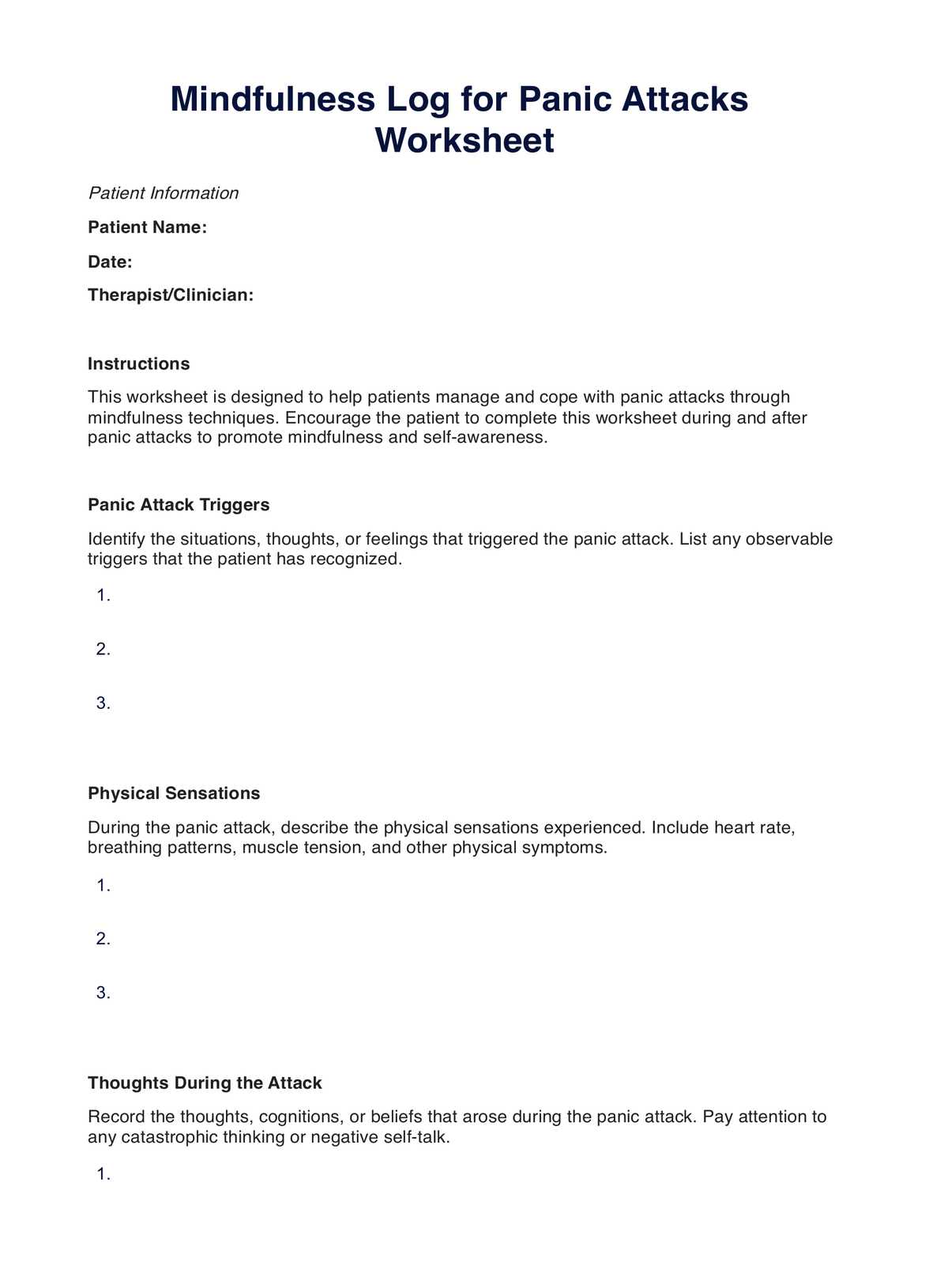
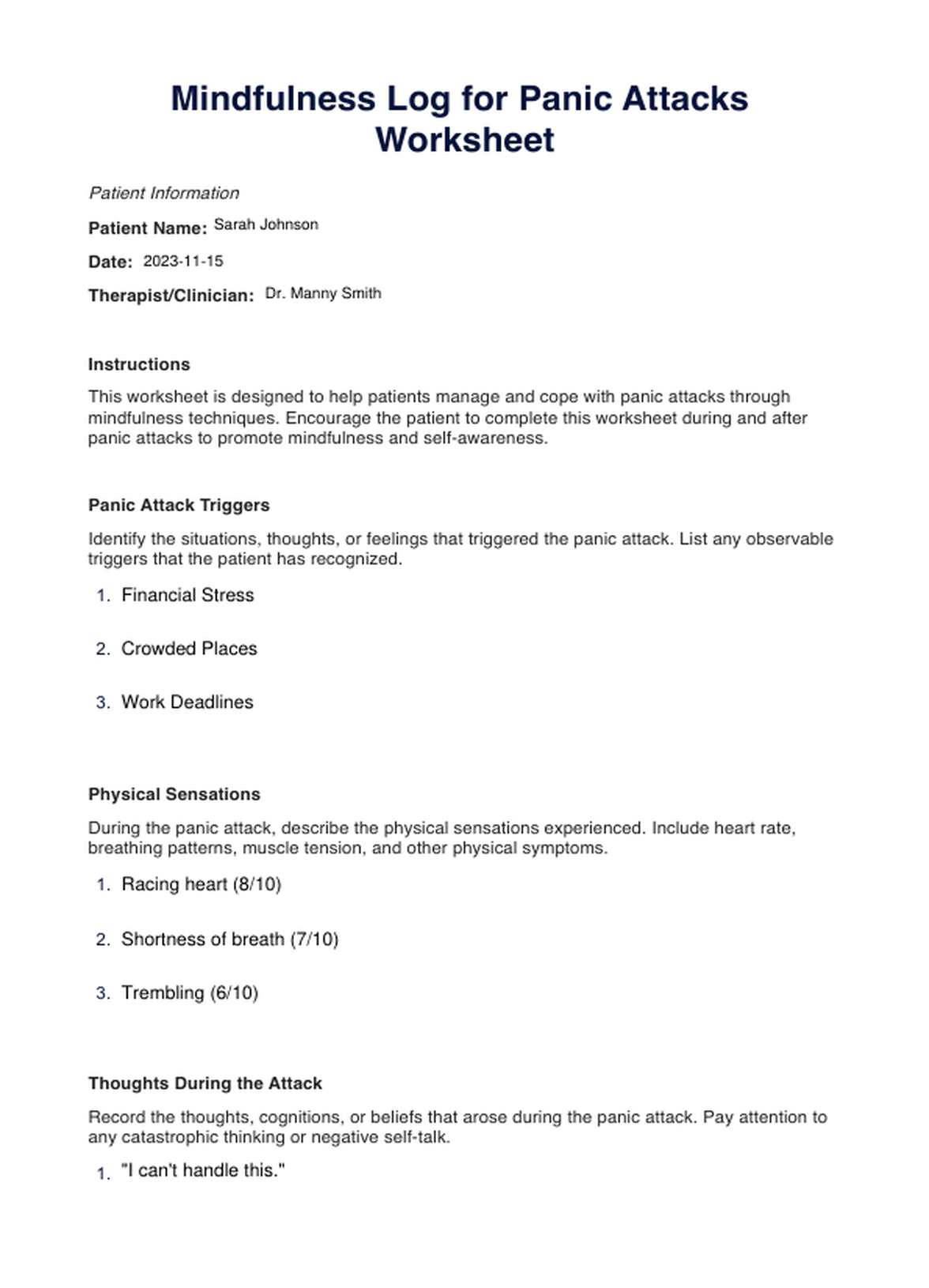

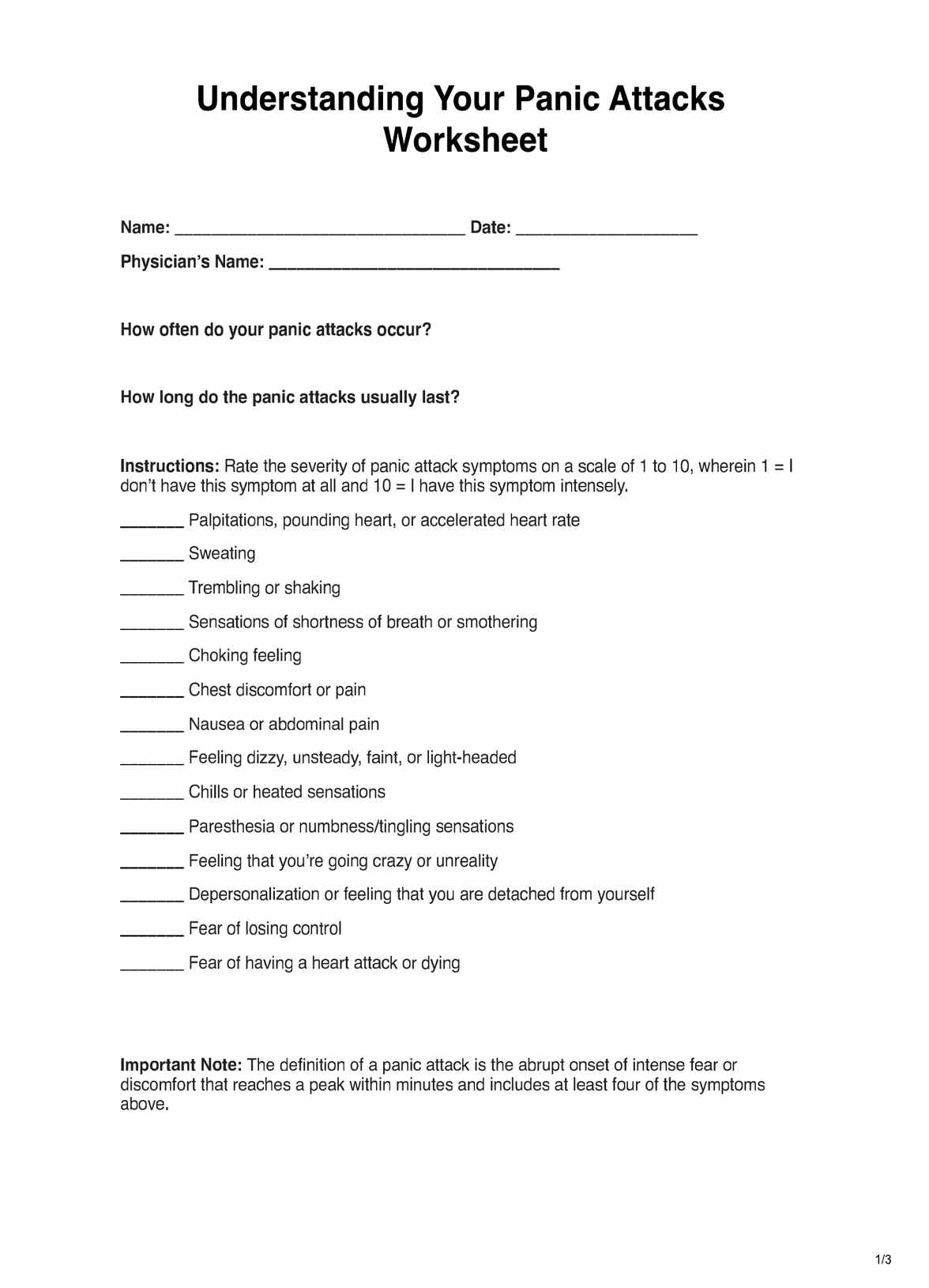














-template.jpg)





















































































